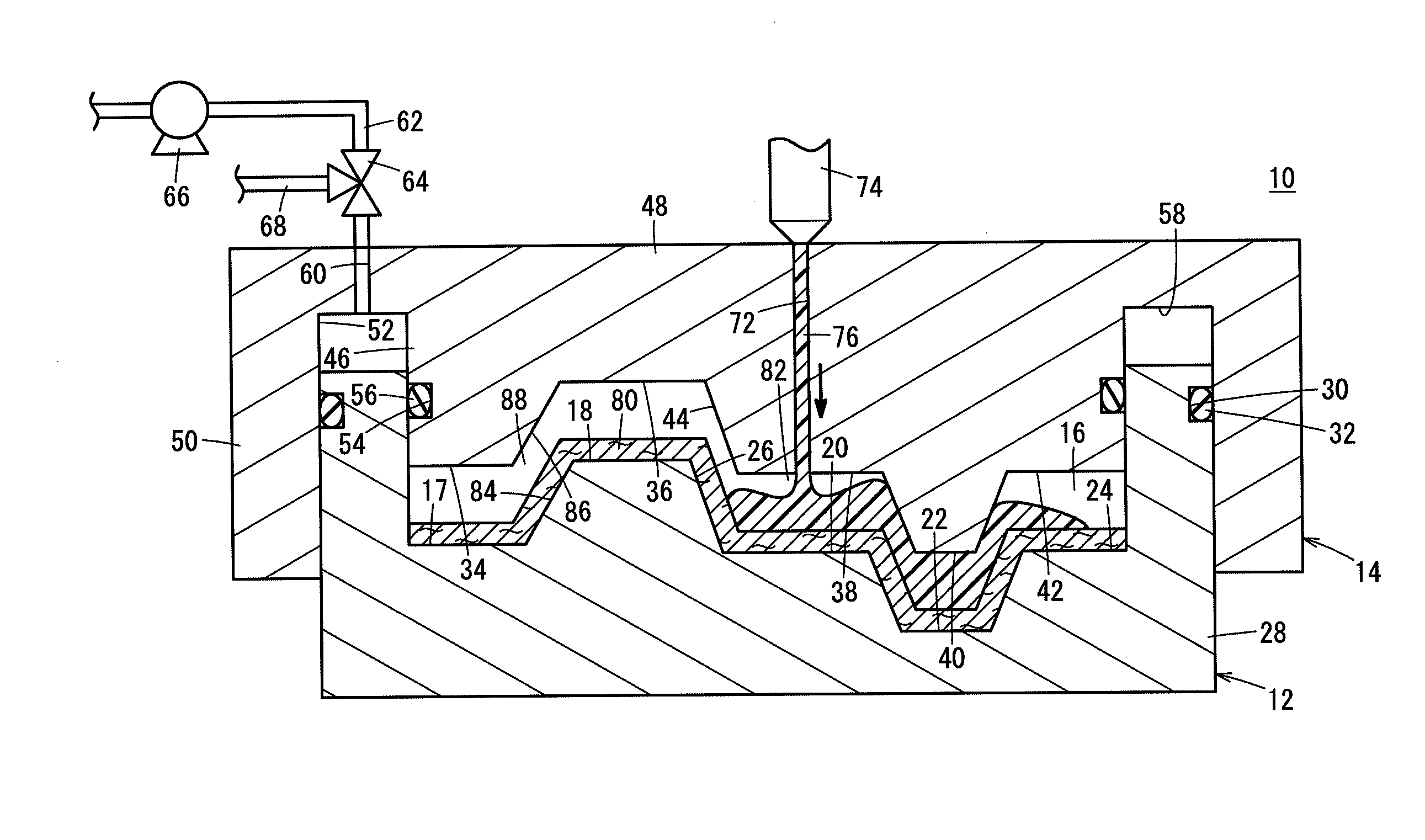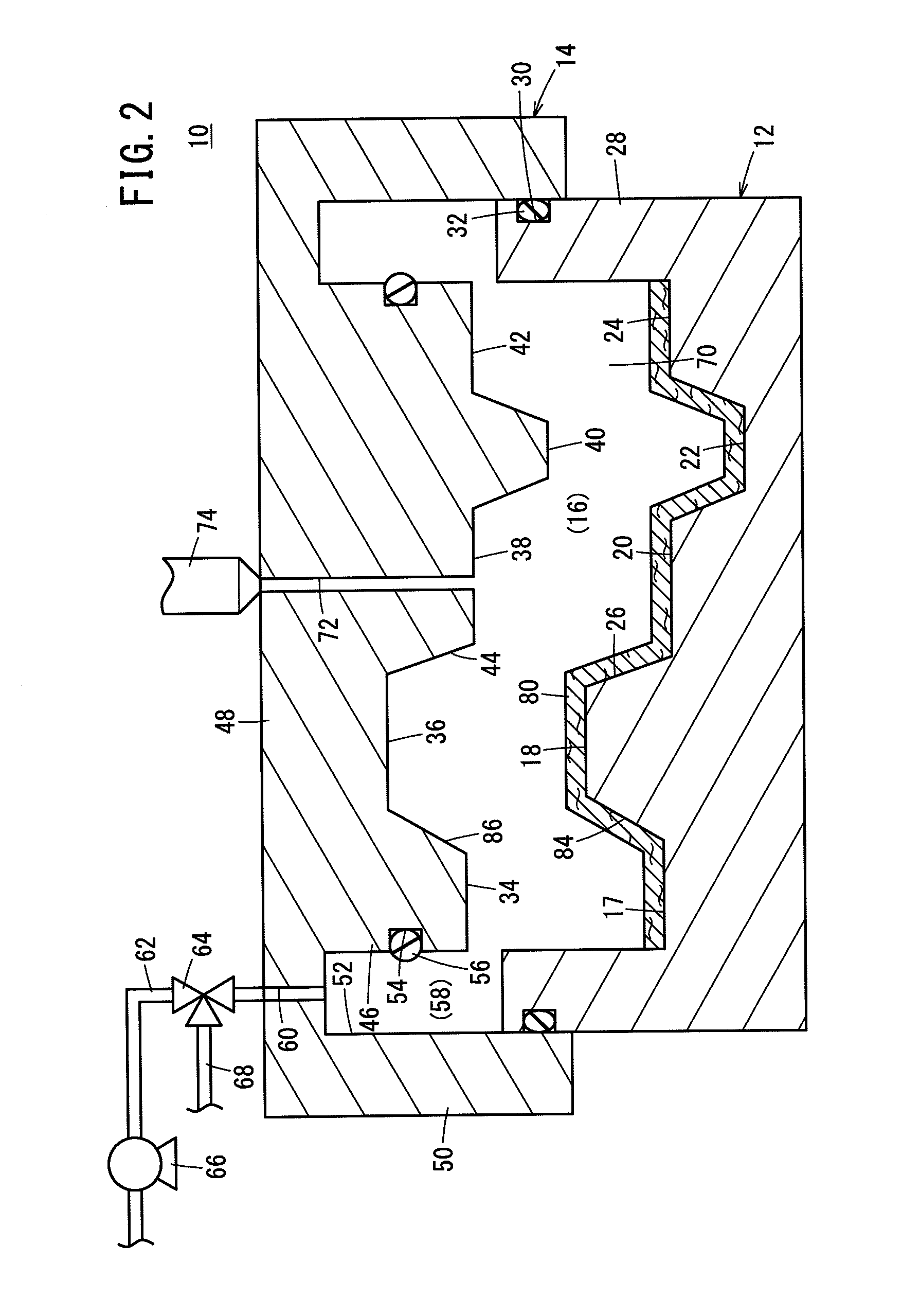Method and apparatus for producing molded article of fiber-reinforced plastic
a fiber reinforced plastic and molded article technology, applied in woodworking apparatus, domestic applications, food shaping, etc., can solve the problems of unavoidable formation of unavoidable unavoidable area, liquid resin cannot be readily transferred from the depression toward the protruding portion, and liquid resin cannot be readily transferred to the downstream side of the narrow portion without application of a sufficient pressure, so as to reduce the inspiratory force in the subsequent molding process, reduce the effect of force and high yield
- Summary
- Abstract
- Description
- Claims
- Application Information
AI Technical Summary
Benefits of technology
Problems solved by technology
Method used
Image
Examples
Embodiment Construction
[0061]A preferred embodiment of the molding method of the present invention for producing a molded article of a fiber-reinforced plastic (a molded FRP article) using the molding apparatus of the present invention will be described in detail below with reference to the accompanying drawings.
[0062]FIG. 1 is a schematic vertical cross-sectional view of a principal part of a fiber-reinforced plastic molding apparatus 10 (hereinafter referred to simply as a molding apparatus 10) according to the present embodiment. The molding apparatus 10 contains a lower mold 12 and an upper mold 14 as a molding tool. A production cavity 16 is formed between the lower mold 12 and the upper mold 14 (see FIGS. 3 to 6). In FIG. 1, the molding apparatus 10 is shown in an open state.
[0063]The lower mold 12 is a stationary mold, which is fixed in a given position. A first flat wall 17, a first protrusion 18, a second flat wall 20, a first depression 22, and a third flat wall 24 are arranged on a cavity formi...
PUM
| Property | Measurement | Unit |
|---|---|---|
| thickness | aaaaa | aaaaa |
| pressure | aaaaa | aaaaa |
| volume ratio | aaaaa | aaaaa |
Abstract
Description
Claims
Application Information
 Login to View More
Login to View More - R&D
- Intellectual Property
- Life Sciences
- Materials
- Tech Scout
- Unparalleled Data Quality
- Higher Quality Content
- 60% Fewer Hallucinations
Browse by: Latest US Patents, China's latest patents, Technical Efficacy Thesaurus, Application Domain, Technology Topic, Popular Technical Reports.
© 2025 PatSnap. All rights reserved.Legal|Privacy policy|Modern Slavery Act Transparency Statement|Sitemap|About US| Contact US: help@patsnap.com



